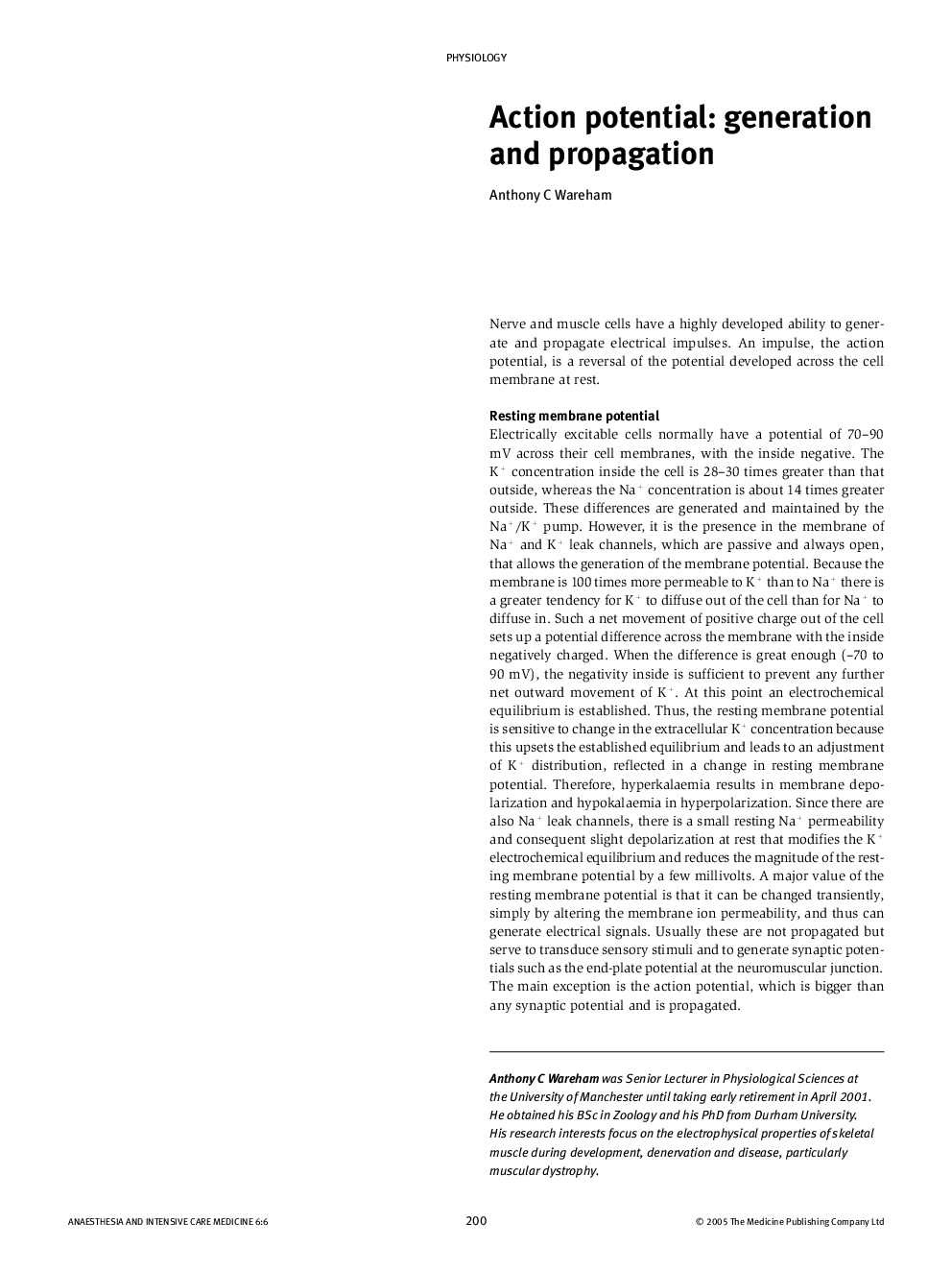| Article ID | Journal | Published Year | Pages | File Type |
|---|---|---|---|---|
| 9089881 | Anaesthesia & Intensive Care Medicine | 2005 | 4 Pages |
Abstract
Neurons and muscle fibres have a significant, inside negative, resting membrane potential of â70 to â90 mV. A suprathreshold stimulus (over 10 mV) leads to an action potential, a brief reversal of potential that overshoots zero by about 40 mV resulting from rapid activation (opening) of voltage-gated sodium channels that allow an inrush of sodium ions. As well as a fast activation gate, the sodium channel has a slower inactivation gate. On inactivation there is a finite time when the sodium channel is inexcitable (the absolute refractory period). Repolarization partly results from channel inactivation, but is speeded up by opening of potassium channels that allow an outward movement of potassium ions, giving a repolarizing current after the overshoot. The potassium current decays slowly, leading to membrane hyperpolarization for a few milliseconds, when a greater than normal stimulus is needed to activate another action potential (the relative refractory period). The sodium/potassium exchange mechanism provides the ionic conditions for membrane depolarization and repolarization during the action potential, but plays no direct role in the action potential because it operates too slowly. The action potential is an all or none event, so information about the strength and duration of a stimulus is conveyed by frequency. Action potentials are conducted at about 1 m/s along skeletal muscle fibres and unmyelinated axons due to their regeneration at all regions over the cell. Insulation by myelin speeds conduction up to 140 m/s in large axons by allowing saltatory conduction, where action potential regeneration only occurs at nodes of Ranvier, which are 1-2 mm apart.
Keywords
Related Topics
Health Sciences
Medicine and Dentistry
Anesthesiology and Pain Medicine
Authors
Anthony C Wareham,
